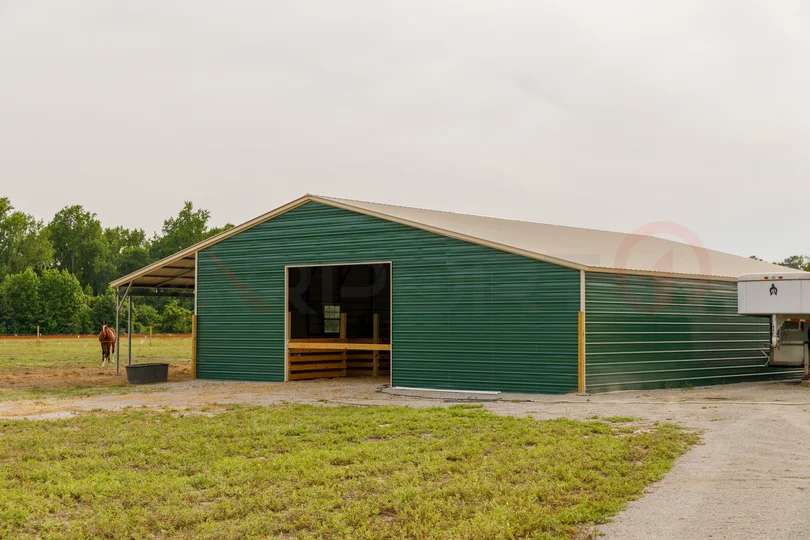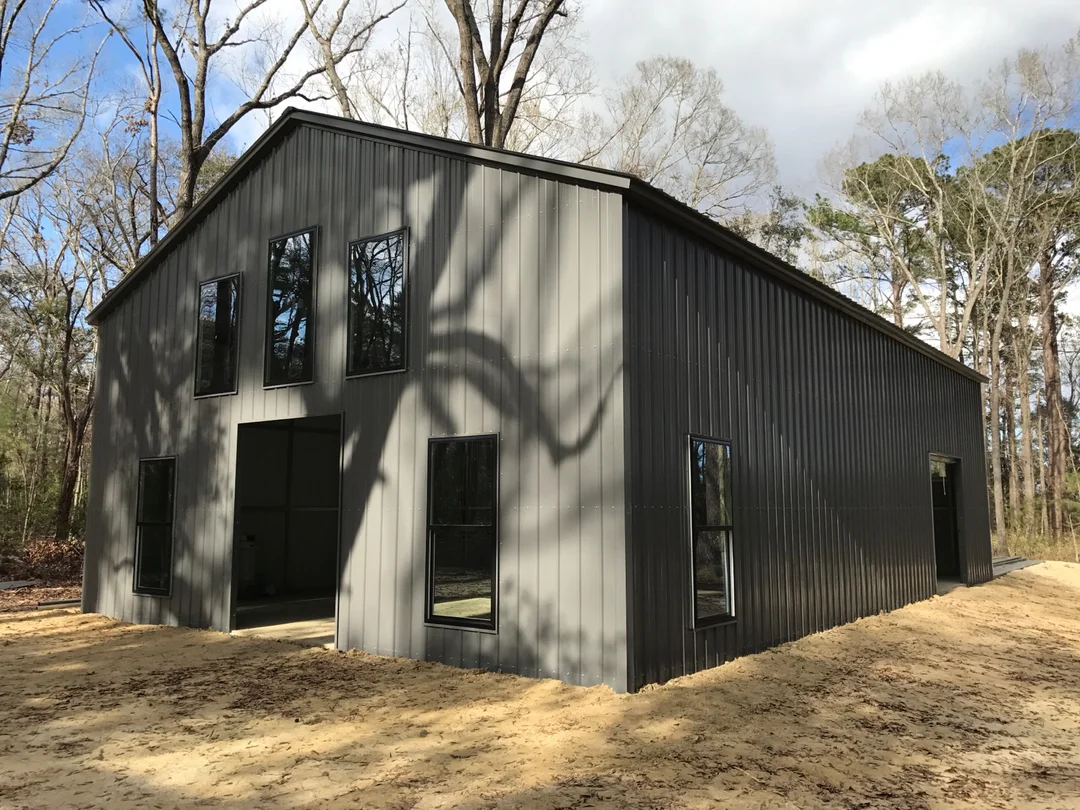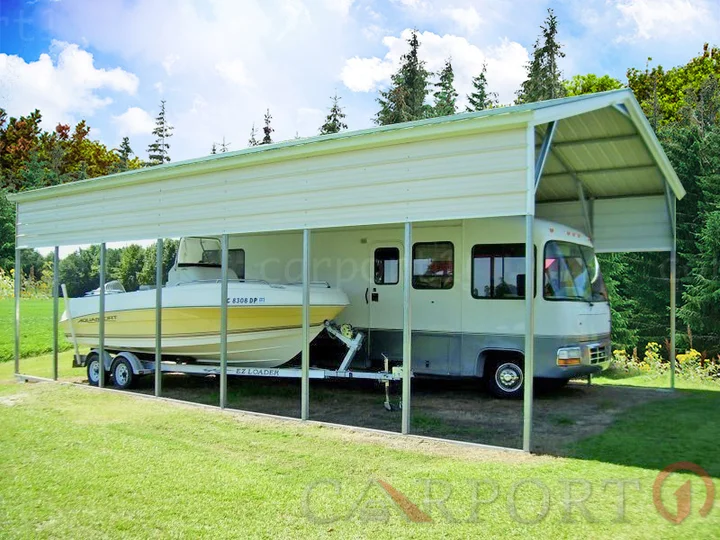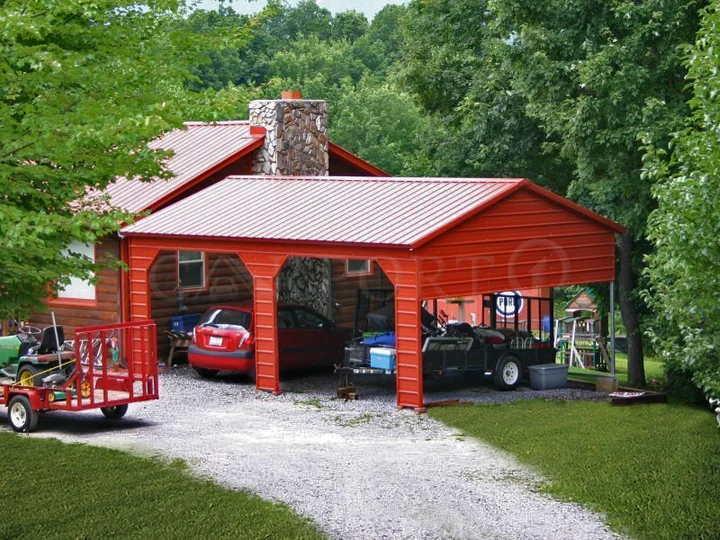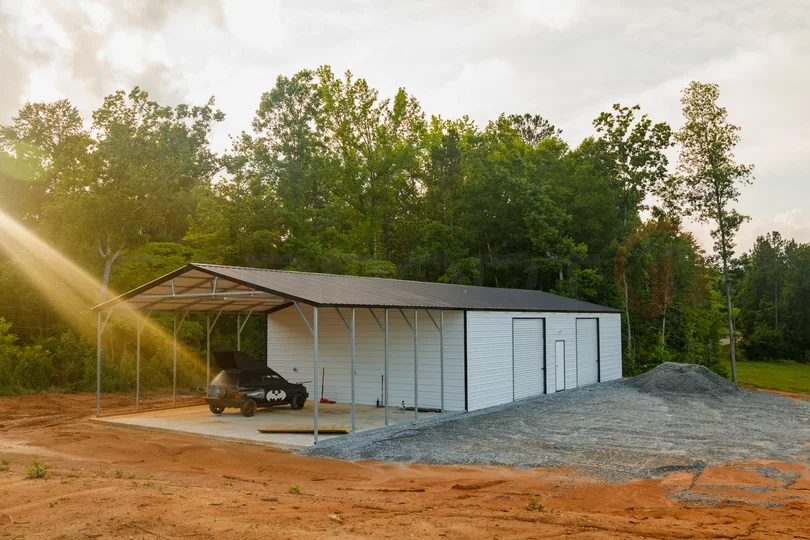Building Terminology

Metal Carport Building Terminology
Baserails
The square tubing along the base and sides of the building onto which the legs are attached.
Bow
The bow is a single piece of square tubing bent to shape to make the roof of the building.
Certified Structure
Certified structures are designed by a professional engineer to meet specific wind and snow loads. This type of structure is always used when building permits are required. A copy of the engineering plans will be supplied upon request. Stamped or raised seal plans are available at an extra charge if your building codes/inspection department requires them.
Concrete Anchors
Sometimes referred to as concrete wedge anchors. Concrete anchors used in building installations on concrete in place of the rebar, to secure the building to the surface.
Corner Braces (Leg Braces)
Corner braces are U-shape steel channels that are used to help reinforce the structure of the building. On all of our buildings, four 2 feet long leg braces come standard and they are installed on each corner of the building. Additional corner braces are available at an additional cost. We recommend the use of 2 feet long corner braces on each building leg (2 per bow). For buildings with legs that are taller than 8 feet, we recommend that customers upgrade to 3 feet long corner braces on each corner and we also recommend that they are installed on each leg of the building (2 per bow).
Extended Gable Ends
Steel panels, installed horizontally or vertically, with the same shape as the bow of the building. They are usually up to one panel deeper than the traditional gable end. They can be installed on either end of the building and they extend down, usually, up to three feet down from the top of the legs up. Extended gable ends can be installed vertically at an additional cost.
Gable Ends
A steel panel, installed horizontally or vertically, with the same shape as the bow of the building. They can be installed on either end of the building and they extend from the 3 inches below the top of the legs, upward. Gable ends can be installed vertically at an additional cost.
Garage Door
Our garage doors are the roll-up type. As the door is raised, they roll into a cylinder or barrel shape above the door opening. We offer a variety of sizes up to 10′ x 10′. Please note there are no windows in our garage doors and they are only available in white.
Gauge
Gauge refers to the thickness of the panels and tubing used on the buildings. Ther lower the gauge, the thicker and stronger the metal.
Hat Channel
Sometimes referred to as purlins, hat channel is used on carports and garages with vertical roof systems and/or vertical sides and ends. It supports the panels on those systems.
Header
Headers are placed at the top of the door frame when a door opening is requested, whether it is an opening with or without a door (walk-in or garage) is installed.
J-Trim
J-trim is used as trim underneath extra paneling on the sides of carports (optional), around walk-in doors, garage doors, and windows to provide a finished appearance. We offer 13 different colors.
L-Trim
L-trim is used as trim on the ends of the panels of regular style carports to provide a finished look. L-trim is also used one the exterior corners of garages. We offer 13 different colors.
Lag Bolts as Anchors
Lag bolts/screws are used to secure the building, in the place of rebar or concrete anchors when installing on wood. Certified structures cannot be anchored to a wood foundation or deck.
Legs
Legs are the vertically installed lengths of square tubing that connect the bows or trusses (top) to the base rail (bottom).
Mobile Home Anchors
Mobile home anchors are used to securing the building in an installation where concrete is not used. There two discs at the lower end of the anchor are helical in design. They are supplied at no cost on certified structures installed on the ground. They can be installed as an option on non-certified structures with ground installation at an additional charge.
Non-Certified Structure
Non-certified structures are most often used where building permits are not required or where engineered wind and snow loads aren’t specified.
Panels
Our standard panels are 29 gauge steel, excluding the state of Florida -where we utilize 26 gauge panels. They are 3′ wide and they are available in standard lengths of 21′, 26′, 31′, and 36′. We offer 13 different colors. Note that we offer 26 gauge panels in states other than Florida for an additional charge.
Peak Braces
Peak braces U-shaped steel channels that are installed at the center bend of the bow all structures to reinforce the roof. They are also sometimes referred to as center braces.
Peak Height
Peak high refers to the height from the surface to the to the highest point on the building.
Rebar Anchors
Rebar is a common steel reinforcing bar. Our rebar anchors are made from this reinforcing bar and they are 1/2″ x 32″ long. They have a 5/8″ nut welded onto one end. They are installed through a hole drilled into the base rail and they secure the building in both ground and asphalt installations.
Ridge Cap
Ridge cap is a piece of metal that sits on the ridge of the roof on all vertical roof carports and garages. Its function is to cover the seam where the roof panels meet at the apex of the building.
Roof Styles
We offer three roof styles. Vertical roof, boxed eave, and regular The differences are described below:
Vertical Roof Style
BEST – A-Frame Design Roof with the panels installed vertically. The corrugated ridges in the panel run from the ridge cap down the eave side of the building. This allows dirt, trash, water, and snow to exit off to the eave side of the building. Water and snow will tend to lay longer on the horizontally sheeted roof like the boxed eave and regular style until the water evaporates or the snow melts off. Steel panels on home and business roof-tops are always installed vertically. The roof bow/truss has a welded transition via a steel pin on to the legs. This unit has vertical roof trim on the sides and ends for a finished appearance as well as hat channel to support the vertical panels and it adds rigidity to the structure. All buildings longer than 36’ should be vertical since our longest panel is 36’ and we would have to splice or lap horizontally sheeted buildings.
Boxed Eave Roof Style
BETTER – A-Frame Design Roof with the panels are installed horizontally. The corrugated ridges in the panel run from front to back or end to end. It is more affordable since it does not have the hat channel and ridge cap that the vertical roof has to support the vertical panels. The roof bow/truss has a welded transition via a steel pin onto the legs. The underneath eave sides of the roof bow or truss are covered with boxed eave trim for a nice finished appearance. All buildings longer than 36’ should be vertical since our longest panel is 36’ and we would have to splice or lap horizontally sheeted buildings.
Regular Roof Style
GOOD – Radius Bend Frame Design with the panels are installed horizontally. The corrugated ridges in the panel run from front to back or end to end. The regular style is the most economical unit since it does not have the hat channel, the ridge cap, the eave-side trim, nor the welded transition from the roof bow/truss to the leg. All buildings longer than 36’ should be vertical since our longest panel is 36’ and we would have to splice or lap horizontally sheeted buildings
Truss
A truss is a triangular shaped frame that is made of steel and they are stronger than a bow. They are standard on buildings larger than 24′ wide. Trusses are optional on buildings that are 24′ wide and less.
Tubing
The tubing forms the frames of our structures. In most states, we offer as standard the 14 gauge 2-1/2″ x 2-1/2″ square tubing. As an option, our buildings can be constructed with a stronger 12 gauge 2-1/4″ x 2-1/4″ square tubing, at an additional charge. In the state of Michigan, 12 gauge tubing is utilized due to greater snow load requirements.
Walk-in doors
Our optional walk in doors are 32″ x 72″ or 36″ x 80″ and they have a 9″ x 9″ window. All walk-in doors are white. You may choose to have a walk-in door without a window at no additional charge.
Windows
Our optional windows are 30″ x 30″.
Windows
End Walls are used to close the Metal Buildings Ends (Front walls and Back walls). Galvanized Steel Framing and Painted Corrugated Steel Panels are used to make it strong and durable enough to stand.

